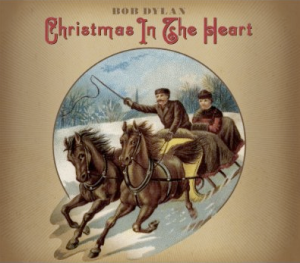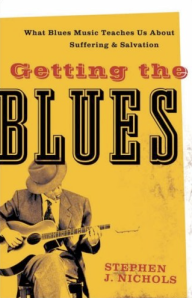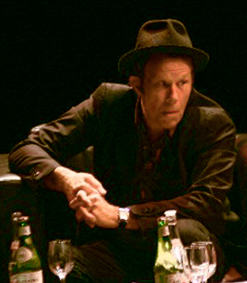It sits right there between Bringing it All Back Home and Desire. On my iPod at least.
Yep. Bob Dylan’s newest album, the sugar-frosted Christmas in the Heart. Not Christmas approximately or revisited, on the tracks or out of mind. In the Heart.
And yeah, kids, it’s all for charity.
 Whether adopting a stance of disbelief or nonchalant acceptance when first hearing His Bobness would take on Xmas, few of Dylan’s legion followers could have predicted that title. Of course, few fans can predict anything the elder croonster will try, including sputtering the following words in the polka (!) rendition of Must Be Santa:
Whether adopting a stance of disbelief or nonchalant acceptance when first hearing His Bobness would take on Xmas, few of Dylan’s legion followers could have predicted that title. Of course, few fans can predict anything the elder croonster will try, including sputtering the following words in the polka (!) rendition of Must Be Santa:
Who laughs this way, ho ho ho? Santa laughs this way, ho ho ho.
So what’s left? That instrumental album he’s always promised? A children’s album with Dylan infusing the Eensy Weensy Spider with equal parts Glenlivet and Marlboro? How many artistic roads can a man walk down?
 But back to that lovable chestnut of a Christmas album. From the opening jingle bells to the final, sonorous amen, it’s clear that a) this is all in good fun, b) it’s Dylan’s most explicitly religious album since Shot of Love. It includes standard hymnody material like Hark The Herald Angels Sing, O Come All Ye Faithful (with Dylan croaking in Latin(!)), The First Noel, and O Little Town of Bethlehem.
But back to that lovable chestnut of a Christmas album. From the opening jingle bells to the final, sonorous amen, it’s clear that a) this is all in good fun, b) it’s Dylan’s most explicitly religious album since Shot of Love. It includes standard hymnody material like Hark The Herald Angels Sing, O Come All Ye Faithful (with Dylan croaking in Latin(!)), The First Noel, and O Little Town of Bethlehem.
But that’s not all. Dylan’s rendering of Here Comes Santa, for instance, has religious dimensions I had never fathomed. The message, however, is clearly ecumenical and devoid of the strident warnings of Slow Train Coming:
Santa knows that we’re God’s children, that makes everything right. Fill your hearts with Christmas cheer, ‘cos Santa Claus comes tonight.
Peace on earth would come to all if we just follow the light. Let’s give thanks to the Lord above, ‘cos Santa Claus comes tonight.
Can Dylan save Christmas? The critics are mixed, but stay on the slightly positive side of things. Jim Caroompas says, “for my money the very best Christmas album I have ever heard.” The Onion AV Club gives it a B-, calling Dylan a “fruitcake,” saying he “surely knows just how wrong his mangled liquefying-granite voice is for lots of this material, and there are times when he flaunts just that what-the-hell quality….” Sean Wilentz, the Princeton historian and scholar-in-residence at BobDylan.com, has Dylan channeling Bing Crosby. Well, okay.
Myself, I’m partial to Bruce Cockburn’s Christmas, so it’ll take a few more listens for me to put Christmas in the Heart.








